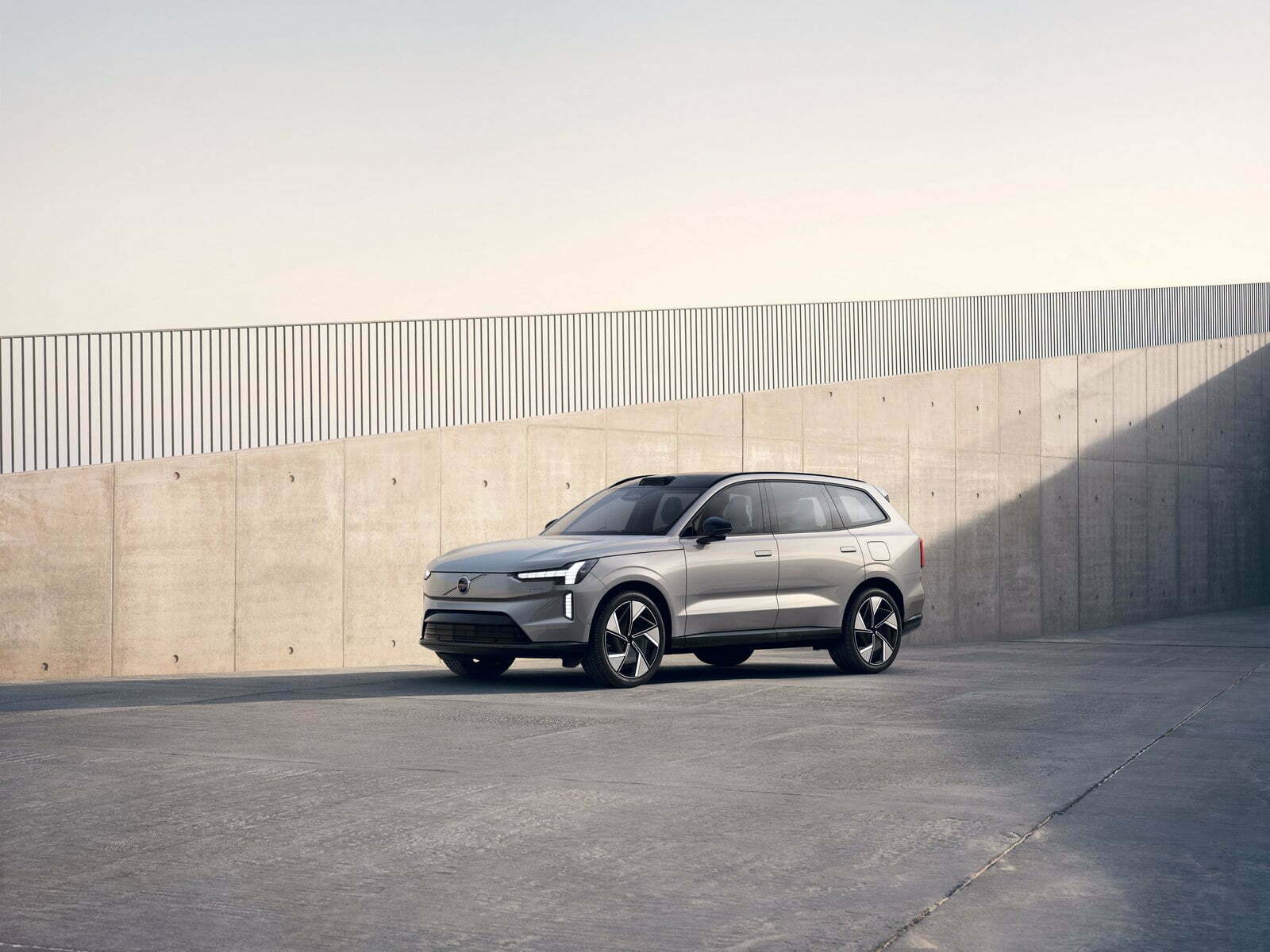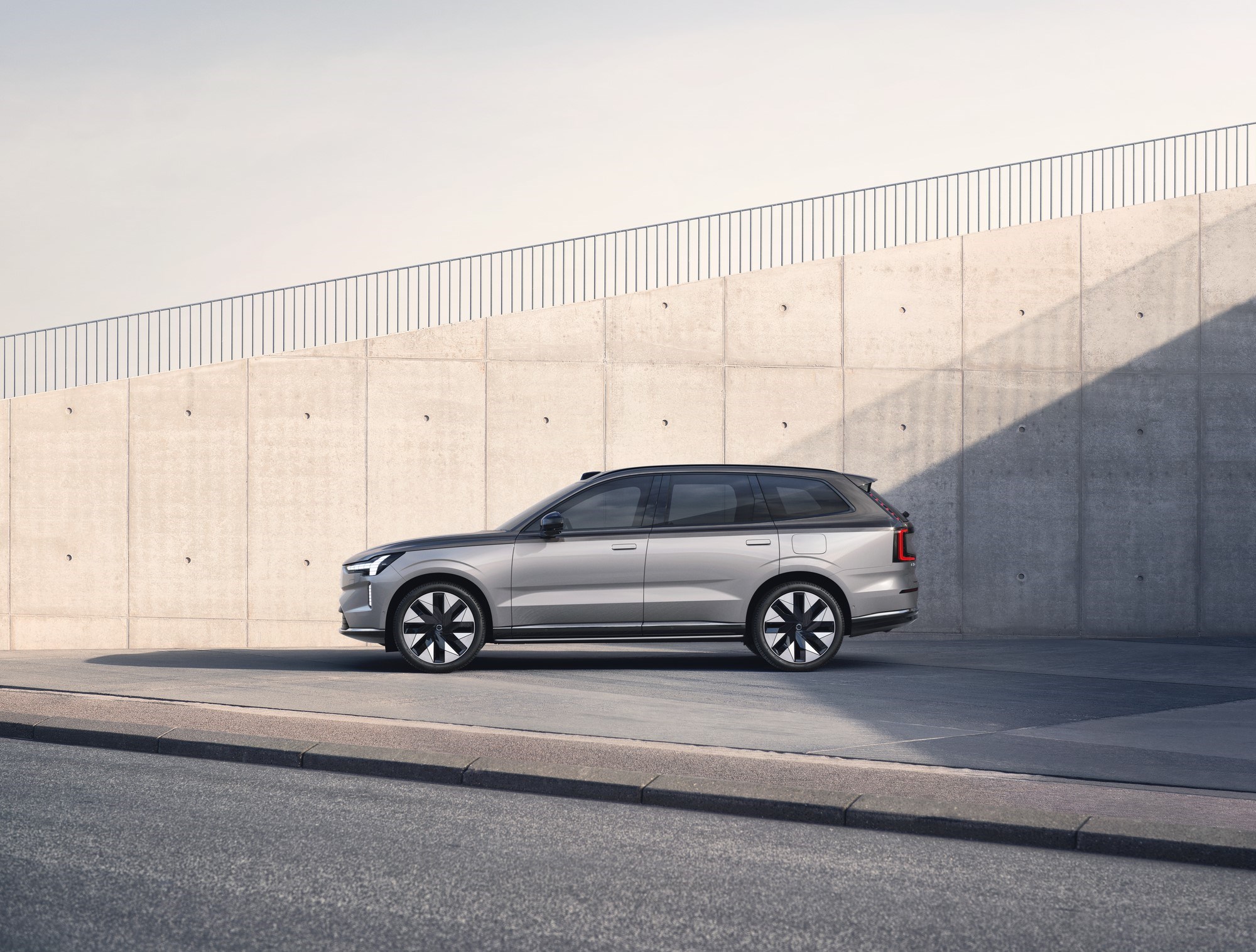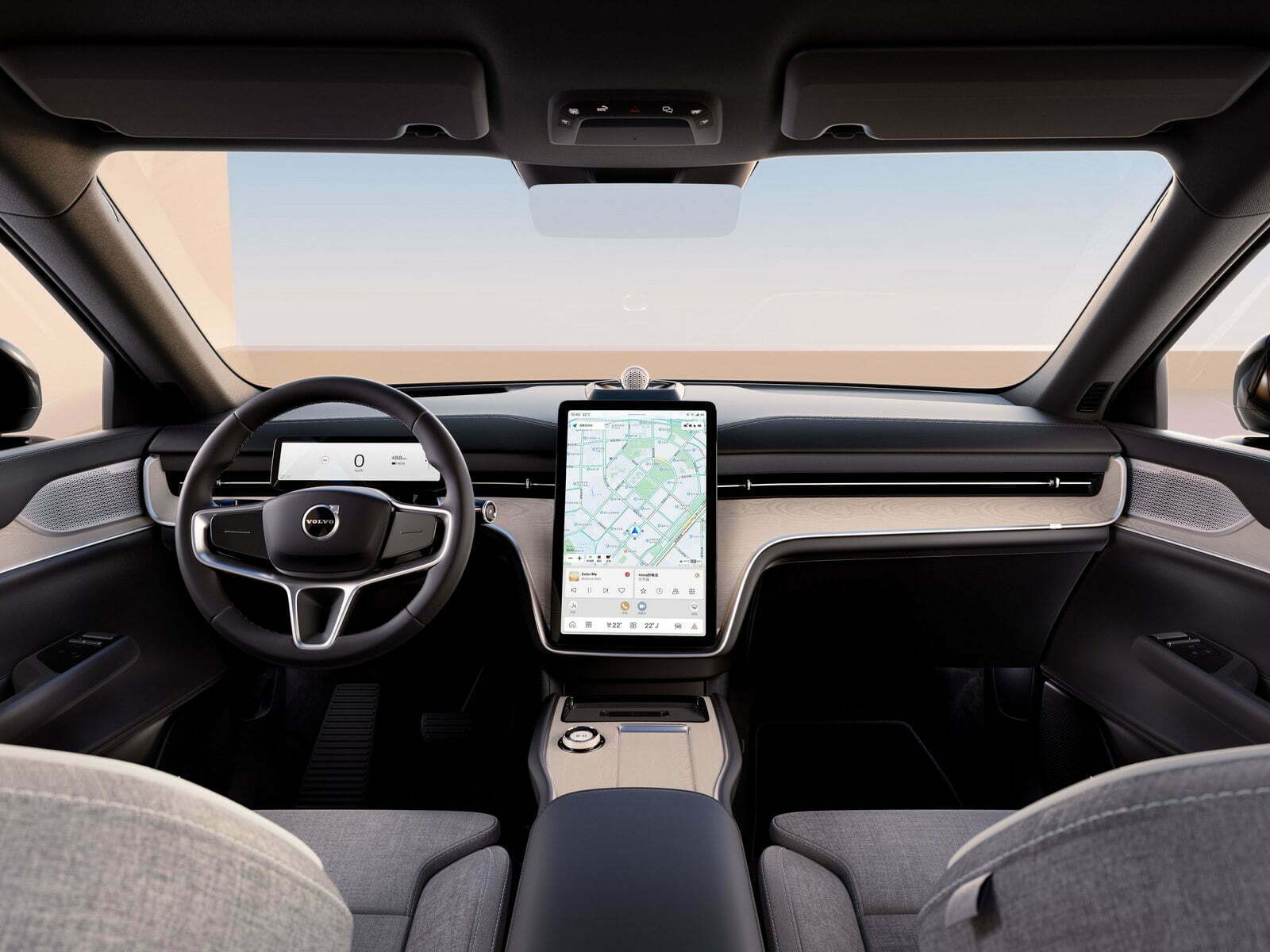The Volvo EX90 Powertrain will have two motors. One in the front and one in the rear. Power distribution is constantly controlled by an on-board computer to maximise efficiency and optimise power delivery at the front and rear axles under all circumstances. The all-wheel-drive Volvo EX90 is powered by new-generation electric motors that combine to produce 380kW/517hp and 910Nm of torque in the Twin Motor Performance version. Meanwhile the Twin Motor variant boasts a combined output of 300kW/408hp and 770Nm of torque for instant acceleration and excellent drivability.
The Volvo EX90 Twin Motor Performance has all-wheel drive, which enables controllable torque distribution split evenly between the two axles. The Volvo EX90’s onboard systems analyse a myriad of datasets in milliseconds to instantly distribute power and torque to the axle and wheels with the best grip for maximum traction and stability.
Both the Electric Front Axle Drive (EFAD) and Electric Rear Axle Drive (ERAD) are three-phase Permanent Magnet Synchronous Machines (PMSM) and the ERAD combines a torque vectoring/declutch unit that allows the Volvo EX90 to decouple the e-motor from the drive during coasting to minimise energy consumption. In the Volvo EX90 Twin, the front e-motor provides the drive away from standstill under moderate acceleration, however, if more throttle is applied both e-motors engage to provide the driver with greater drive off the line. A ‘Constant AWD’ setting can be selected.
The powerful powertrain and highly efficient all-wheel drive layout also makes the Volvo EX90 an excellent towing car, not least when dealing with heavy loads on slippery surfaces. It offers a towing capacity of up to 2,200kg.
Twin Motor Data ERAD/EFAD Max Power: 120kW /160hp 180kW/241hp Max Torque: 350Nm/420Nm Twin Motor Performance Data ERAD EFAD Max Power: 200kW/268hp 180kW/241hp Max Torque: 490Nm/420Nm Weight: 69kg/61kg Max rpm: 14 000rpm/14 000rpm

One Pedal Drive
Volvo EX90 is equipped with One Pedal Drive technology, which acts as a regenerative braking system to slow the car down using the electric motors and regenerating the kinetic (moving) energy back into electricity, used to recharge the battery.
The braking force from the motors is used as the primary brakes for the car during normal driving. Only if braking with the electric motors is not enough, the regular (friction) brakes are also engaged until the necessary braking power is achieved. The car manages all this completely seamless to the driver.
Battery
Boasting a large capacity 111kW battery (107kW usable), the Volvo EX90 brings a new dimension to all-electric driving for the brand. The 17 modules are arranged within the floor of the vehicle and the configuration lowers the centre of gravity of the car and has the additional benefit of allowing for enhanced interior space thanks to a completely flat base.
The battery assembly contains not only modules, but it also contains battery cooling and heating to ensure optimum working conditions for the unit. For improved range and efficiency, the Volvo EX90 has a pre-conditioning function for the battery – accessed via the Volvo Cars app – which gradually warms or cools the battery pack depending on the ambient temperature while it is connected to the grid.
The battery of the Volvo EX90 can be fast-charged using up to 250kW DC. This means charging at this rate from 10-80% can be done in as little as 30min in optimal conditions* or in practical terms, the driver can add 180km (111 miles) of range in the region of 10mins. The battery will be automatically preconditioned for best fast charging performance when the charging station is set in the car’s navigation system.
Expected range** on the Volvo EX90 is up to 600km (372km) (WLTP combined) for the Twin Motor while the Twin Motor Performance can do a maximum of 590km (366miles) (WLTP combined). For EPA certification in the United States, the Volvo EX90 is estimated to travel up to 482km (300 miles) on one full charge.
Bi-directional charging and vehicle-to-grid (V2GThe upcoming, fully electric Volvo EX90 is the first Volvo car to be hardware-ready for bi-directional charging capabilities. Initially becoming available in selected markets, bi-directional charging has the potential to help you make your energy utilisation cheaper, more efficient and sustainable. Paired with smart-charging capabilities coming to the Volvo Cars smartphone app, the Volvo EX90 has the potential to allow you to charge your car when demand from the grid and prices are low – usually meaning there are more renewable sources in the energy mix – and save that stored energy to be used later.

Bi-directional charging has many interesting use cases. It can be used to provide power to your house, other electric devices or even another electric car. The latter could be useful in cases where an electric car has been stranded. More over, bi-directional charging opens the possibility for customers to sell energy back to the grid, contributing to more efficient and sustainable utilisation of the overall grid capacity.
Volvo Cars is currently investigating the different possible use cases and how we could make them available to customers, and in which markets. An overview of the different use cases can be found below. Please not that this is not necessarily reflective of Volvo Cars future offer.
• Vehicle to home (V2H)
The energy stored in your car’s battery can be utilised to power your home, e.g. during a power break or during peak hours when energy is more expensive.
• Vehicle to load (V2L)
Energy stored in the car’s battery can be used to power or recharge batteries in other devices, such as an electric bike, scooter, camping equipment or home electronic device.
• Vehicle to vehicle (V2V)
Depending on the other car model, energy stored in the car’s battery can be used to recharge another EV, too.
Vehicle to grid (V2G)
Depending on rules specific to each energy market, bi-directional charging could also allow customers to support the grid in different ways. This could include taking in more energy during times when there’s a surplus of renewable energy, or selling energy back during peak usage hours when there is more demand. If most cars have this functionality in the future, then the grid could be balanced more often. That could increase the overall sustainability of the grid by reducing potential energy waste from renewable sources at times when production outperforms demand.
Charging time:
* Charging and range figures are preliminary and derive from estimates and performed by Volvo Cars for Volvo EX90 and these outcomes are not guaranteed. Preliminary range figure is for the initially available Twin Motor all-wheel-drive version (300Kw/408 hp). Preliminary range varies for other trim levels.
** The driving range and energy consumption under real conditions vary depending on driving behaviour and other external factors. Charging times can vary and are dependent on factors such as outdoor temperature, battery temperature, charging equipment, battery condition and car condition. Car certification pending”.


